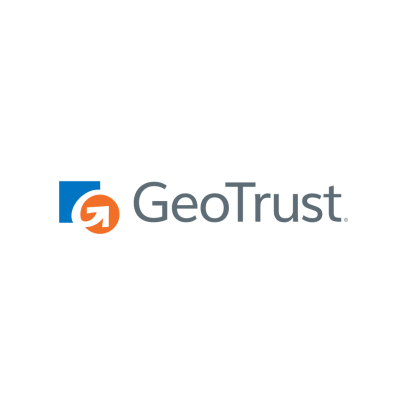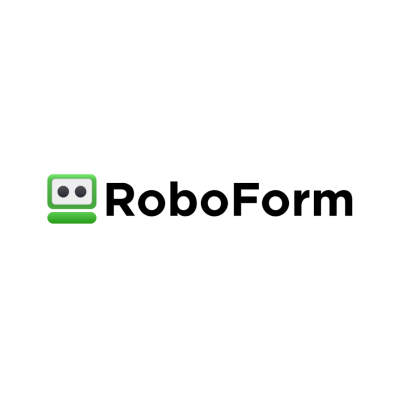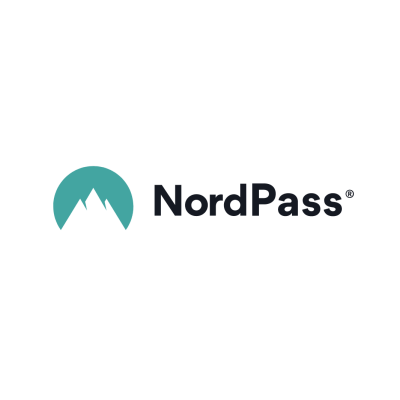Best Tools for Preventing and Detecting Cyber Attacks
Being a website owner usually means that at least a part of your livelihood is tied to the security of your site (if not your entire livelihood). It means losing access, getting DDoS attacked too often, getting your private site data leaked, and similar issues can seriously jeopardize everything you’ve been working so hard to accomplish.
With so many threats out there, keeping your site safe is a challenge; however, there are some tools that can help you out with this. Here are five such tools and how you can use them to turn this uphill battle slightly more in your favor.

1. Firewalls
Whenever talking about the tools used for site security, firewalls are the first concept that comes to mind.
First of all, firewalls analyze incoming traffic. Some IPs are blacklisted, and if your firewall software recognizes such an address, it can prevent it from ever accessing your site. This is one of the best ways to prevent DDoS attacks.
Firewalls are not a one-trick pony, they also monitor outbound traffic. This means that if there’s a leak somewhere, they’ll notice it in time. Communication with malicious servers is a huge problem; the sooner you notice it, the better.
Controlling ports and protocols is one of the safest ways to limit the attack surface and reduce the risk of unauthorized access to your site. This is just one of many functions of firewalls and something you should never overlook.
A good firewall will keep track of the state of all active connections. You see, a change in the state of connection is a way in which malicious outside parties fly under the radar. To spot it, you need a firewall with strong AI-powered protocols that can make context-aware decisions. This way, you can allow or block traffic based on multiple factors. This is great for keeping your site safe without restricting its functionality too much.
Most importantly, firewalls provide logging and monitoring services, which help provide you with data that you can track later to analyze incidents and further improve your cybersecurity. Most importantly, they provide the same form of reports all the time.
As a site, you can even look for Firewall-as-a-Service (FWaaS). This is a more reliable way of resolving this problem and requires less active work on your part.
Best choices
Out of many firewall tools, the two best options for the majority of site owners are:

Bitdefender: Bitfinder’s firewall is great for first-time users, mostly because it automatically creates protocols for every app that tries to access your system. In other words, it gives you little to do manually while providing all the protection you need.

Norton: The combination of Norton Smart Firewall and Norton Intrusion Prevention System blocks the majority of intrusion attempts. It also warns you of these attempts, which gives you an idea of the money’s worth that you’re getting from the platform.
Still, these two are not the only available tools on the list.
2. CAPTCHA tools
Sometimes, you want to keep your site safe from being overwhelmed by bots, so you want to use CAPTCHA and reCAPTCHA tools. Sure, many people claim that these are not enough, but on Datadome’s blog, you can read more about what you should be doing instead.
Still, you must understand the concept and what you get from the use of these tools, even if you opt to go for an alternative in the end.
First of all, CAPTCHA stands for “Completely automated public Turing test to tell computers and humans apart.” The point is that this test is relatively simple for humans to handle but nearly impossible for a bot (or at least where bots were a few years ago).
Most commonly, the visitor to the site is asked an abstract question like recognizing distorted characters, selecting specific images, etc. The task had to be so abstract that an old version of NLP (natural language processing) couldn’t comprehend it, yet it was not too difficult, so it drove the majority of traffic away.
Sometimes, these challenges weren’t visual but audio-based. Here, you had to type the word or the letter that you just heard.
Also, these tools usually had time limitations, which weren’t too stringent but still didn’t leave too much room for idling.
Just from our section, it’s easy to see the limitations of this system (and why an alternative may be a great solution). First of all, there’s always a risk of making it too frustrating for your audience, which may seriously hurt your conversion rate, traffic, and even your bottom line. Second, the bots have advanced so much, which means that these methods need to keep up.
Best choices
If you aim to protect your site from spam and abuse, here are the two tools you should go with:

reCAPTCHA: When it comes to captcha tools, reCAPTCHA controls almost the entirety of the market. In other words, the difference between the number of users of reCAPTCHA and the second biggest competitor is huge, and for a good reason.

BotDetect Captcha: The strongest feature of this platform is its incredible audio CAPTCHA, which allows the website to be accessible even to people with impaired vision.
You can’t go wrong with either of the two.
3. Malware scanners
Malware can penetrate your site just as easily as it penetrates your devices. This is why you need to pick a reputable and effective malware scanner, something along the lines of Sucuri or Wordfence.
These tools are usually incredibly simple to install and set up. What you need to do is find the tool and register. Here, you’ll have to pick a plan. While some of these tools have demo versions and free plans, as a website owner, especially someone whose livelihood depends on the security of this site, you might want to go for a premium plan.
Next, all you have to do is get the plugin and see if you can integrate the scanner with your website platform. From this point on, you should configure the settings according to your security requirements.
Now, while these scanners work automatically and provide real-time protection, you also want to set up a regular scanning schedule. Ideally, you would run a full scan as soon as you have the plugin installed, then set up a schedule that consists of daily or weekly scans. With regular scans, you can either completely prevent malware infestation or detect them early enough before there’s any serious damage.
Once detected, the platform will quarantine and remove the malware in question.
One more thing you need to keep in mind is the importance of keeping your software updated. This is always advisable, but nowhere is this as relevant as when it comes to malware scanners. You see, malware is evolving more rapidly than any other form of online threat, which is why constant updates are the only way for your scanner to keep up.
Best choices
Malware and phishing are some of the biggest threats for website owners, and using a good scanner can help.

Norton: Norton provides you with some incredible independent test results and has some of the best security features in the industry. It also helps that it includes a great VPN and password manager in the offer.

McAfee: Other than being great at detecting malware, the McAfee Malware Cleaner feature is one of the best ways to reset your browser back to the default setting. This comes in handy more often than you would expect.
The fact that these two tools are quite renowned also helps increase their credibility.
4. SSL/TLS certificates
These certificates ensure that all the communication between your users’ browsers and your site is encrypted and authenticated and that their data integrity is checked.
This is not just a tool that you can use to keep your site safe; it’s also a trust marker. Upon seeing it, your visitors will easily trust you more. Not only that, but all the guides out there are teaching your users to look for these certificates, which is why if your site lacks it, they might not even give it a shot.
Apart from this, regulations and standards in different parts of the world mandate that you have SSL/TLS certificates. GDPR and PCI DSS are two such regulations.
On top of it all, these certificates give you numerous SEO benefits (both direct and indirect). In other words, plugins that optimize your site’s speed are not the only tools that can quickly increase your ranking.
So, how do you get these certificates?
First, you need to find the right certificate authority (CA) and purchase it. Remember that these providers won’t just give you the certificate; they’ll also ensure that you’re compliant where it counts.
You also have a free option to get it in the form of Let’s Encrypt. This is a cost-effective option, but it does require you to invest a bit more effort on your part.
Either way, you’ll have to generate a certificate signing request (CSR) and submit it to your CA of choice. You can’t just be handed out the certificate; you actually have to prove (verify) the ownership of the domain.
Then, when you get the certificate, you just install it and make sure to keep it up to date.
Best choices
The simplest way to get certified is to find the right platform.

DigiCert: The fact that so many sites use DigiCert to get their SSL certificate is not random. This method provides you with the most technical support and makes your ability to get certified the most reliable.

GeoTrust: This method also requires minimal involvement since the team behind GeoTrust works behind the scenes to make you qualify for the certificate.
Getting a certificate is non-negotiable for anyone who dreams of running a respectable site.
5. Password managers
You need to be very careful about who gets access to your site. Even if you are the only one, it’s important that you stick to the principles of keeping a strong password. This means keeping it random.
You need to avoid something meaningful and easy to get, mix up different symbols, letters, capitalization, and numbers, but you also have to memorize it. Telling it to someone or even writing it on a piece of paper (as insurance) is a security risk.
So, you need to start using a password manager. This way, you’ll never have trouble making an impenetrable password and never expose yourself to the risk of forgetting about it.
If there is more than one site administrator (which will often be the case), encouraging them to use these password managers is advised. Sure, you can train your team and raise awareness all you want, but even if you insist on all the principles of keeping a strong password, nothing can prevent your coworkers from using “P@ssword1” as their password.
By encouraging them to just use this tool, you’ll prevent this problem most efficiently and automatically. This means that you’ll no longer have to rely on their judgment or focus.
Also, this way, it’s easier to change passwords every 30-90 days.
Best choices
Picking the right password manager is not a difficult task and there are more than a few of great options out there.

RoboForm: This tool uses the 256-bit AES encryption form, which means that your data and login credentials are as secure as it gets. On top of it, the tool is incredibly easy to use and has an amazing UI.

NordPass: With NordPass, you get an amazing password generator, autofill, and password import/export options. In other words, all that you’re looking for from a tool like this.
Being responsible with your passwords is a lot easier when you don’t have to do it manually.
Wrap Up
The right tools won’t keep your site secure on their own, but they can be of immense help.
Sure, picking all the right tools and integrating them is a challenge. Paying for premium plans for these tools is an expense. At the end of the day, nonetheless, taking this path saves you both time and money. Just keep in mind that, no matter the effort, the security of your site is worth the trouble.
About the Author

Srdjan Gombar is a veteran content writer, published author, and amateur boxer. Srdjan is a Bachelor of Arts in English Language & Literature and is passionate about technology, pop culture, and self-improvement. His free time he spends reading, watching movies, and playing Super Mario Bros. with his son.






